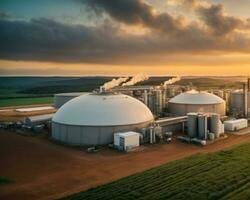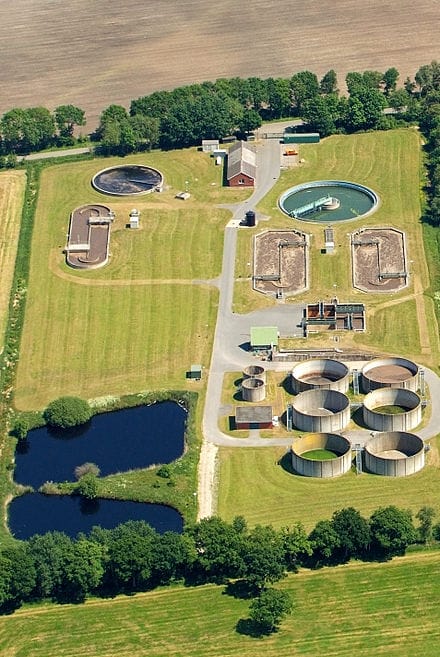Unveiling the Power of Anaerobic Treatment in Industrial Wastewater Management
Contents
- Tapping Into Unrealised Potential
- Delving into the Anaerobic Marvel
- Tailored Solutions for a Diverse Industrial Landscape
- A Spectrum of System Designs to Match Every Need
- Choosing an Industry's Sustainable Path
- Enhancing Efficiency through Innovation
- Bridging the Gap: Synergistic Treatment for Maximum Impact
- Navigating the Challenges and Embracing the Future
Tapping Into Unrealised Potential
The search for effective, long-lasting, and affordable solutions in the dynamic field of industrial wastewater management never ends. In the midst of this never-ending quest, anaerobic treatment stands out as a shining example of innovation, especially for sectors dealing with heavy loads of organic pollutants. This age-old biological process has been updated for modern needs and presents a strong combination of economic and environmental advantages, making it an appealing option for businesses looking to move toward a more environmentally friendly future.

Delving into the Anaerobic Marvel
Imagine a world where wastewater transforms not just into clean water, but into a valuable resource. This isn't science fiction, but the reality of anaerobic treatment. It thrives in the absence of oxygen, where a unique community of microorganisms, aptly named anaerobes, orchestrate a transformative journey. Within specialized bioreactors, wastewater becomes a stage for these industrious microbes, who diligently convert organic contaminants into simpler forms. This bio-alchemy significantly reduces pollutants like biological oxygen demand (BOD), chemical oxygen demand (COD), and total suspended solids (TSS), while simultaneously generating a valuable byproduct: biogas, a renewable energy source.
But the magic of anaerobic treatment doesn't stop there. Its reach extends to the very core of sustainability. The captured biogas can be harnessed as fuel, effectively turning a waste management process into a source of clean energy. This remarkable duality – waste treatment and energy production – positions anaerobic treatment as a cornerstone of circular economy principles within industrial practices. Imagine self-sufficient facilities, generating their own energy needs while minimizing their environmental footprint. This is the transformative power of anaerobic treatment in action.

Tailored Solutions for a Diverse Industrial Landscape
Anaerobic treatment isn't a one-size-fits-all solution. Its versatility shines in its ability to handle diverse industrial effluents, from the rich organic matter found in food and beverage production to the complex challenges posed by dairy, textile, and paper industries. These sectors often generate wastewater rich in organic matter, making anaerobic treatment an ideal first step before further polishing. Warm wastewater, in particular, finds an excellent match in this process, as the warmer temperatures accelerate the treatment efficiency. Think of it as giving the microbes a warm bath, boosting their metabolic activity and leading to faster and more effective pollutant removal.
A Spectrum of System Designs to Match Every Need
The world of anaerobic systems boasts a diverse spectrum of designs, each meticulously tailored to specific needs and conditions. Anaerobic lagoons, for instance, offer vast, open-air solutions for agricultural and certain industrial wastewaters. Imagine large, natural ponds where wastewater undergoes its initial treatment through the combined efforts of sunlight, algae, and naturally occurring microorganisms. For more complex scenarios, technologically advanced options like Upflow Anaerobic Sludge Blanket (UASB) reactors, Expanded Granular Sludge Bed (EGSB) reactors, and Anaerobic Baffled Reactors (ABRs) step in, optimizing the treatment process for varying wastewater characteristics and volumes. Think of these as high-tech versions of the natural lagoons, employing specialized reactor designs and advanced control systems to ensure optimal performance.
Anaerobic filter reactors add another layer of versatility, employing fixed filter media to foster the growth of robust biofilms. This adaptability underscores the inherent strength of anaerobic treatment, showcasing its applicability across a wide range of industrial wastewater challenges. Imagine a maze of specially designed filters within the reactor, providing a haven for the microbes to thrive and efficiently break down pollutants.

Choosing an Industry's Sustainable Path
Anaerobic treatment provides a clear way to reduce environmental impact and maximize resource recovery in a time when sustainability is more than just a catchphrase. By efficiently treating industrial streams with high strength, it not only reduces the strain on our waterways but also makes a substantial contribution to the circular economy by producing biogas. Envision a future where industries convert their waste streams into valuable energy and clean water, thereby promoting sustainability for future generations.
As industries continue to evolve and embrace greener alternatives, the role of anaerobic treatment is poised for exponential growth. Its ability to transform waste into energy presents a compelling case for its adoption across various sectors. Imagine a future where industries are not just compliant with regulations, but actively contributing to a cleaner environment and a more sustainable future. With ongoing advancements in technology and system design, anaerobic treatment stands on the cusp of shaping a more sustainable industrial landscape.
Enhancing Efficiency through Innovation
Bioreactor design advancements and microbial science breakthroughs are paving the way for even greater efficiencies in anaerobic treatment processes. High-rate anaerobic digesters and improved biogas capture and utilization technologies push the boundaries of what's possible, enabling facilities to achieve higher pollutant removal rates and greater biogas yields from the same wastewater volume. Imagine smaller, more efficient reactors capable of processing larger volumes of wastewater while generating more clean energy. These technological leaps not only enhance the environmental benefits but also improve economic viability for a wider range of industries, making anaerobic treatment an even more attractive option.
Bridging the Gap: Synergistic Treatment for Maximum Impact
While anaerobic treatment excels in reducing organic pollutants and generating biogas, it often plays a part in a larger wastewater treatment scheme. Bridging the gap with aerobic treatment creates a comprehensive system that maximizes pollutant removal efficiency. After undergoing anaerobic treatment, wastewater can be further polished in aerobic systems, which efficiently degrade any remaining organic material. Imagine a multi-stage treatment process where each stage tackles specific pollutants with optimal efficiency, ensuring compliance with even the most stringent discharge standards.
This synergistic approach not only ensures clean water but also promotes water reuse, an increasingly critical aspect of sustainable industrial operations. Water scarcity is a pressing global challenge, prompting industries to adopt more sustainable water management practices. Anaerobic treatment plays a pivotal role in enabling water reuse by effectively reducing organic loads in wastewater, making subsequent purification steps more efficient and cost-effective. Imagine industries closing the loop on their water usage, reducing their reliance on freshwater resources, and minimizing their environmental footprint.
Navigating the Challenges and Embracing the Future
Despite its numerous benefits, implementing anaerobic treatment systems is not without its challenges. Managing the variability in wastewater composition, maintaining optimal operational conditions, and dealing with the accumulation of inorganic compounds that can inhibit microbial activity are just a few hurdles to overcome. However, ongoing research and development efforts are focused on conquering these obstacles. Imagine the development of more robust microbial consortia, adaptive system designs, and advanced monitoring and control technologies paving the way for even more efficient and reliable anaerobic treatment processes.
The future of industrial wastewater management is undoubtedly greener, and anaerobic treatment is poised to be a key driver of this transformation. By embracing this innovative technology, industries can achieve significant environmental and economic benefits. Imagine a future where industries operate with minimal environmental impact, generate their own clean energy, and contribute to a more sustainable future for generations to come.
